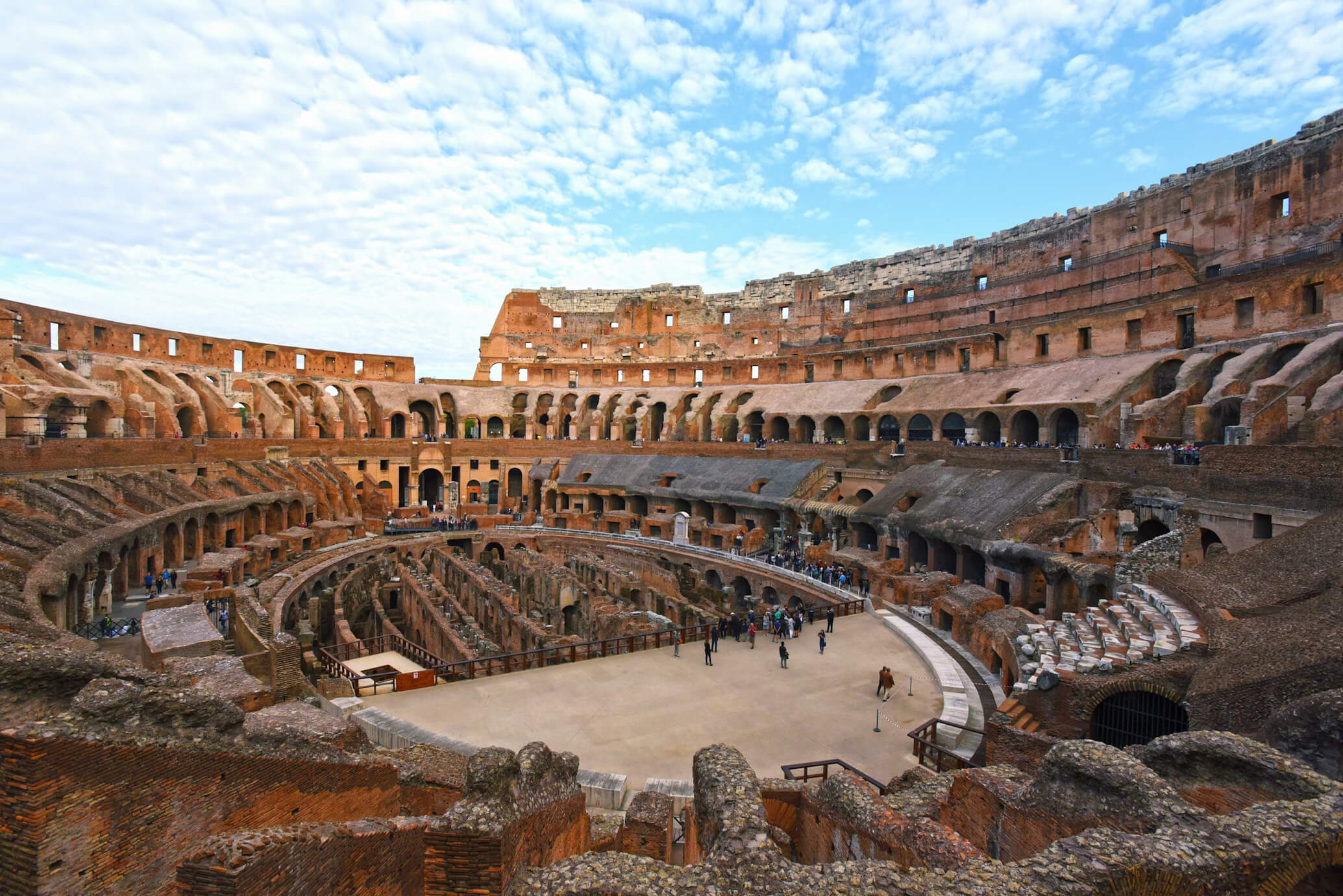The Colosseum is one of the greatest architectural masterpieces that belongs to Rome. Such Roman engineering work was commissioned in 72 A.D by Emperor Vespasian. Still, now this biggest amphitheater symbolizes the Roman Empire at its height.
Known as Flavian Amphitheater, this architectural beauty is listed as one of the Seven Wonders of the World and remains the second hottest tourist attraction in Rome.
Every year over 6 million tourists visit this place. It is nestled in the middle of Rome and is one of the recognizable symbols here.
You would be amazed to see how remarkable the construction was. It has undergone so many disastrous events in the past. Still standing high with its remarkableness. So many amazing stories lie here.
To explore this most visited attraction, you must know the best way. And the best way to get in here is by the skip-the-line entrance. It is suitable for those who want to delve deep into this Roman theater. Here you will get special access to get down backstage to see the inner workings. We have put together this guide that answers your most questions about the Skip-the-line Colosseum Underground Tour.
OVERVIEW
The Colosseum remains the largest amphitheater covering over five acres of land in the center of the ancient land. It has a capacity of 87,000 spectators at one time. It stood for centuries revealing all the dark and glorious parts of the Roman empire.
This was the place for Roman blood-drenched entertainment, packed with so many ancient facts. Ignored for centuries, currently restored for public visit. This place has quite some stories to tell.
From the Gladiators gate, you will go straight to the Arena floor. This elliptical sports floor is still now celebrating those legendary gladiators games.
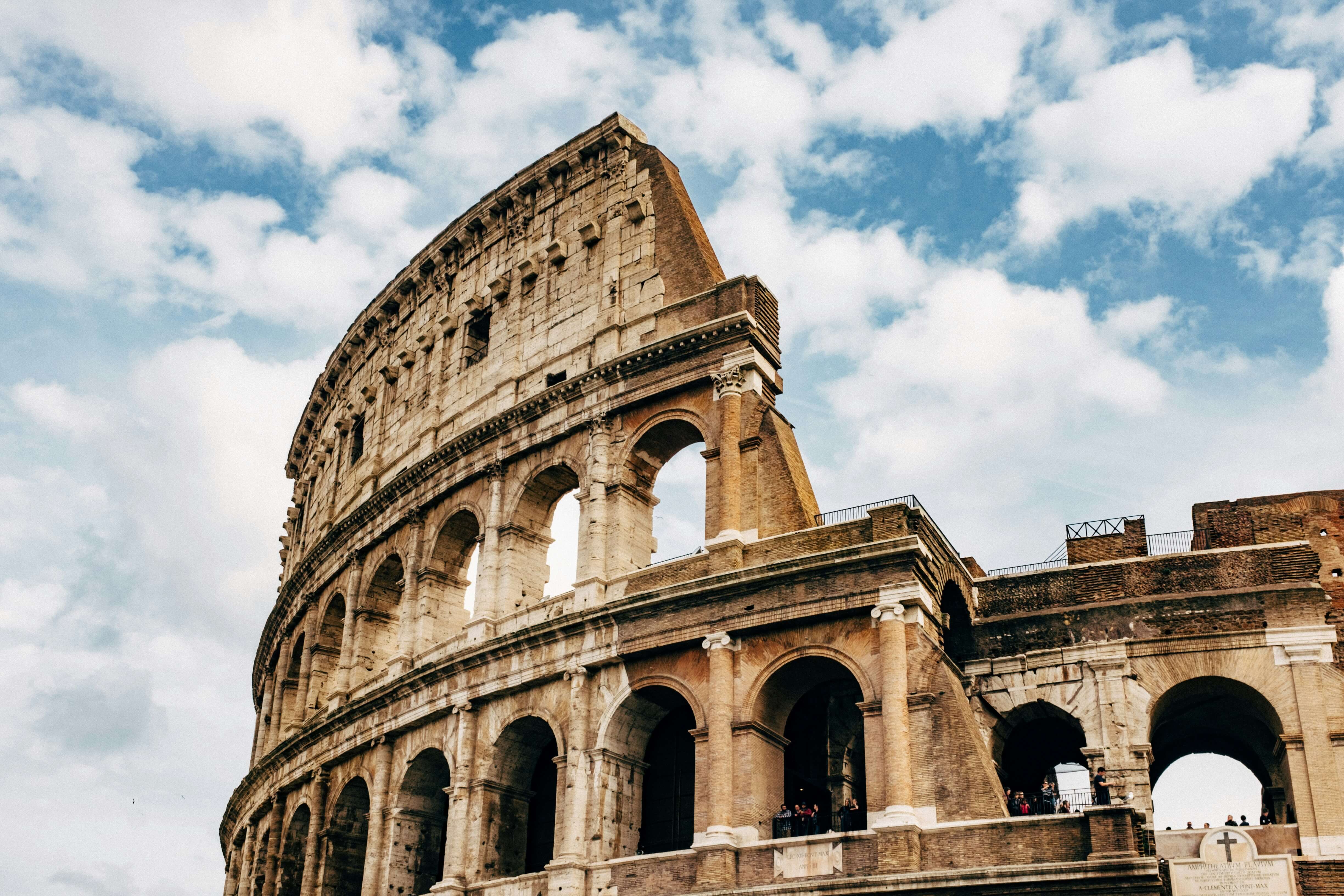
The dungeons of the Colosseum underground are where slaves and animals were stored, including gladiators. During the underground tour, you can learn so much about this site as well.
The underground tunnels of the Colosseum connect to the Hypogeum which is near to the Roman gladiators’ barracks. The Roman’s brilliant engineers designed the tunnels in a way so the Gladiators can be present on the Arena floor hidden. The wild beasts who were caged, also raised 30 feet up to bring sudden brutal pleasure to the Arena floor. So that’s why there were trap doors for both animals and slaves into the arena. Those animals were trained in this way so they can start attracting the moment they saw the enemy.
Not only this one type of brutal flight occurred here. In the Naval fight phase, this same arena floor was flooded to mimic the combat on the sea.
In such early days of the Colosseum, there was remarkable technology invested on the 4th tier of Arena. There was retractable roofing made out of the canvas, utilized during the game to offer shelter to the audience from the scorching sun.
Weathered these historic monuments let you flip back the pages of history. Learn more about Colosseum history in the below segment. You will surely love walking back to the cobblestone-paved ancient roads that you only heard about in history class.
Time to unbox the Rome Colosseum Underground
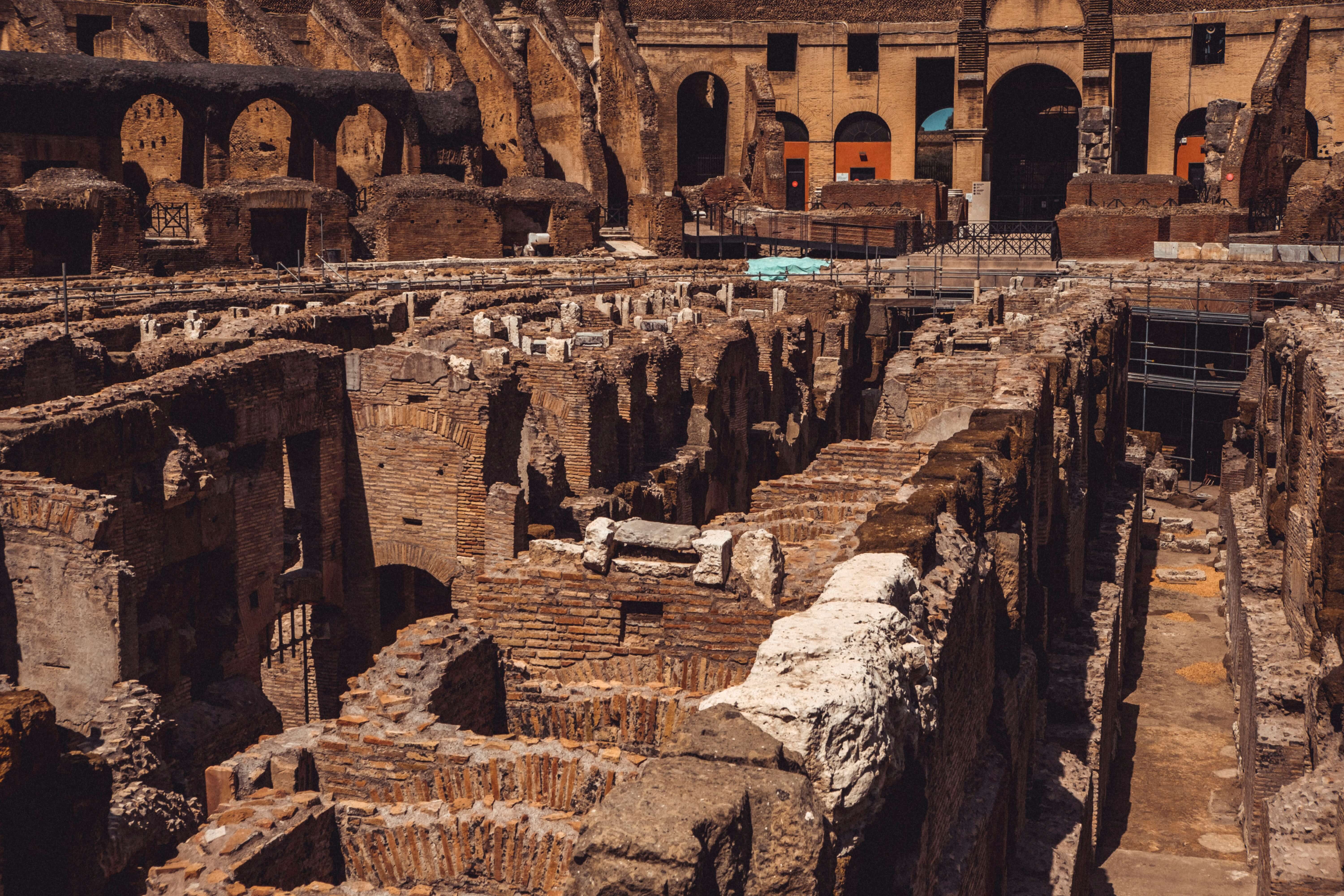
Over 1,900 years old Rome Colosseum
This marvel of ancient Rome is over 1900 years old. In 72 A.D, the construction started. It took almost 8 years to finish it.
It always feels surreal seeing the architecture, walls, arches which are over a thousand years old. Want an interesting fact? This ancient amphitheater is more than 500 years older than the Great Wall of China.
The original Name – Flavian Amphitheater
During the Flavian Empire era, Colosseum was brought to life. That’s where the name came from. In Latin, it was known as, Amphitheatrum Flavium.
The Colosseum work was started by Emperor Vespasian and opened to the public by his son Titus in 80 CE.
The Largest Amphitheater
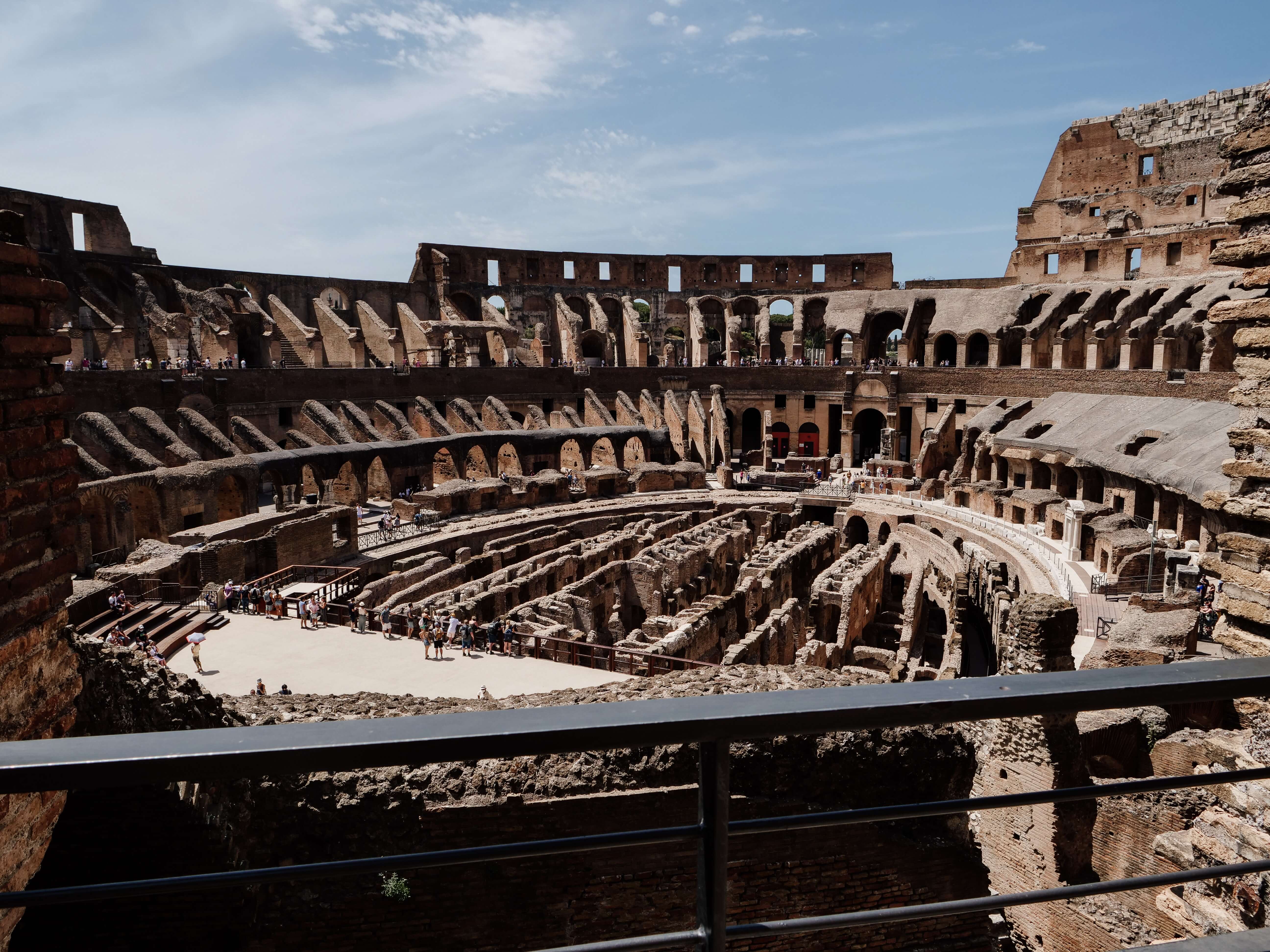
Composed of concrete and stone, this major amphitheater is the largest monument in the Roman world.
This site is twice the size of the football field. Besides the great gladiator history and games, this amphitheater is famous for being the largest in the world. It was built on soft sediment. As a result during earthquakes, the ground shook more and caused more destruction. In the 1349 earthquake, the facade got split.
The great Gladiatorial shows
The main purpose of the colosseum amphitheater was the Gladiator’s combat for public amusement. This was today’s equivalent of a major sports show or the fighting show, just like WWE, but full of blood incidents and zero scripted.
Roman spectators enjoy these fights as a form of entertainment. Contrary to what most people think, most fights ended when one gladiator was too injured to continue. Most fights were organized with strict rules. Combats happened between two similar-sized and experienced men. The fight was stopped by the Referee as soon as one led to serious wounds.
Most fights ended with stalemate when crowds got bored by only the battle. But if the combatant can put on a show in rare cases they were both allowed to leave with honor.
Not all gladiators who were bought are slaves. In the early stages, people and slaves who committed crimes were brought here as combatants. But later the situation changed. For gaining the glory and prize, most free men voluntarily signed as gladiators to fight here. Most ex-soldiers, knights, and even senators attended the fight to demonstrate their warrior pedigree.
To train up, house, and feed the Gladiators was expensive. That’s why their promoters never wanted to get them killed. Trainers taught them to wound the competent, not killed.
Nonetheless, most gladiator shows were brutal, and most of them lived only in their mid-20s.
The opponent who was seriously wounded and left weaponless, his fate was decided by the Spectators. And the emperor had the final say if that gladiator would live or die.
Gladiators rarely fought against Animals
Roman history was often associated with hunting and caging down gruesome animals. And the gladiators were rarely involved in it.
Catching the wild beast was the duty of venatores and bestiaries. Those unfortunate animals were slaughtered for the game-opening event.
They were also used as a form of execution. Criminals and Christians have often thrown to those beasts as a part of the entertainment.
Women also acted as Gladiators
The slaved females were often thrown to the Arena floor, but only a few took swords as their free will. By the first century, women became the common fixture in the games. But those lady gladiators were not taken seriously by patriarchal Roman culture. The Emperor enjoyed pitting women. Only a few of them have proven themselves in combat.
The Hypogeum
The hypogeum at Colosseum featured the sand-covered wooden floor. There are many underground tunnels that connect with the Arena. Gladiators and animals appeared on the Arena floor through those tunnels. They emerged suddenly in front of the crowd to create a special entrance. That was only possible by the intricate rope pulley system. Today you will get a vivid picture of the Hypogeum.
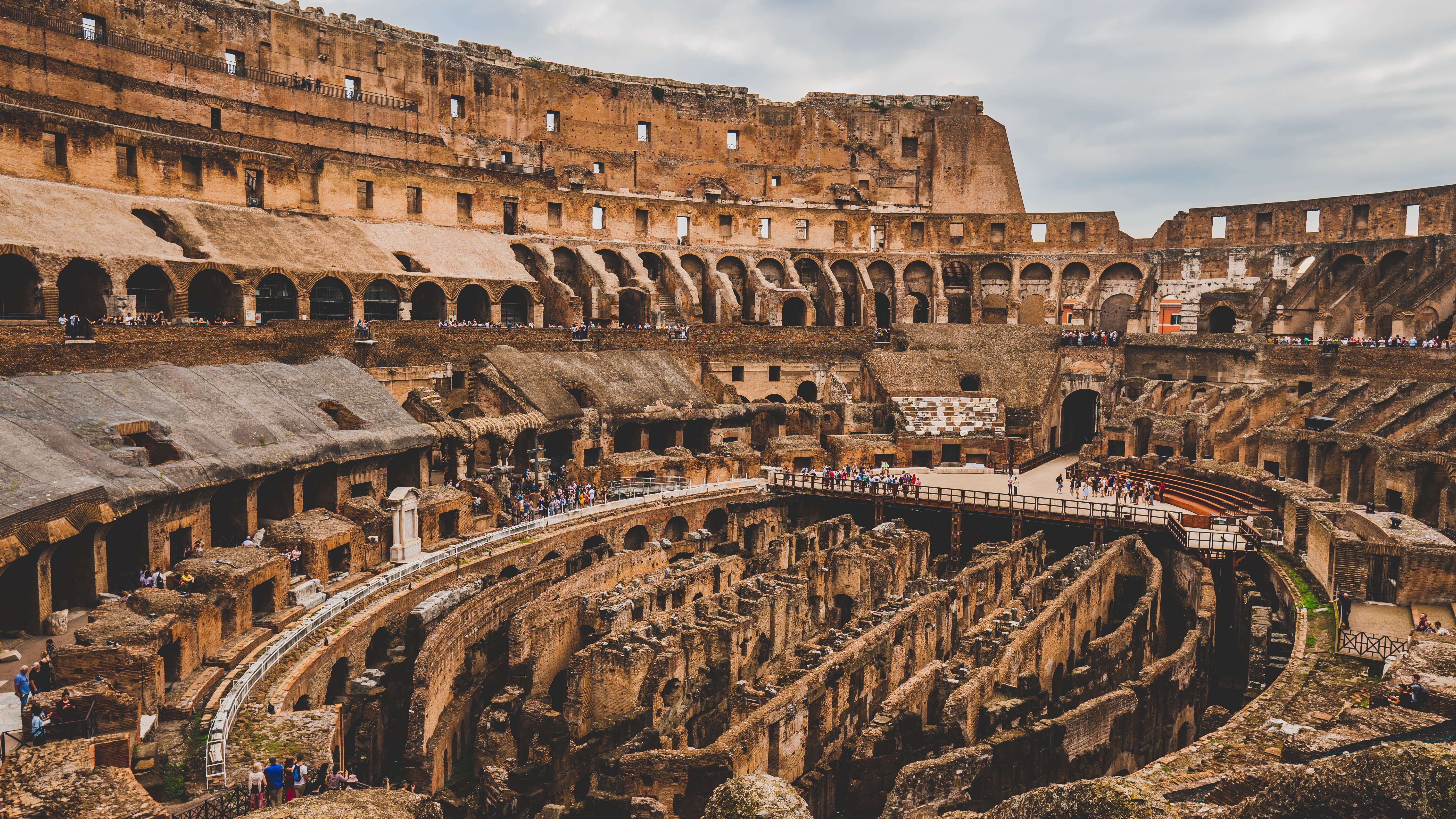
Before the addition of Hypogeum, the floor often flooded to recreate Naval war. After the Hypogeum the gladiators and animals were kept in the bi-level underground section.
Can find the Infamous Nero Statue
Nero Claudius Caesar was the 5th Roman Emperor. He succeeded to the throne at the age of seventeen. He was Emperor Claudius’s stepson. Due to his personal debauchery, extravagances, and some burning evidence, he became infamous.
Although He had a giant bronze statue which can be seen not far from the Colosseum. This eighteen times life-size statue was designed by Zenodorous in between 64 and 68 A.D.
The Golden House – Domus Aurea:
It was Emperor Nero’s pleasure palace. But after Nero’s suicide and a short civil war, Emperor Vespasian dedicates a new pleasure palace. It had Nero’s ornaments and the Baths of Trajan. Now it has become one of the sites of the Colosseum.
Colosseum staff
Running this big amphitheater needed a long list of staff and managers who would tirelessly work to manage it. So during games, spectators might identify some colosseum staff who were seen here and there busy in cleaning and sweeping, safeguarding the entrance, and carrying heavy safety fences to keep in place.
But most of the staff were less visible as they worked underground during the game. When the gladiators fought, lions roared, dozens of slaves busy cleaning and safeguarding the maze of corridors, elevators, stairs, storerooms. So most of them were far away from public view.
Colosseum was once abandoned
In the 5th century when the Gladiators game lost its charm and Roman Emperor began to collapse, the Colosseum stopped organizing any event. Also, the natural disasters took a toll on the amphitheater structure. Till 18 century it was ignored, until when the catholic church decided to protect the site.
Skip-the-line Colosseum Underground Tour
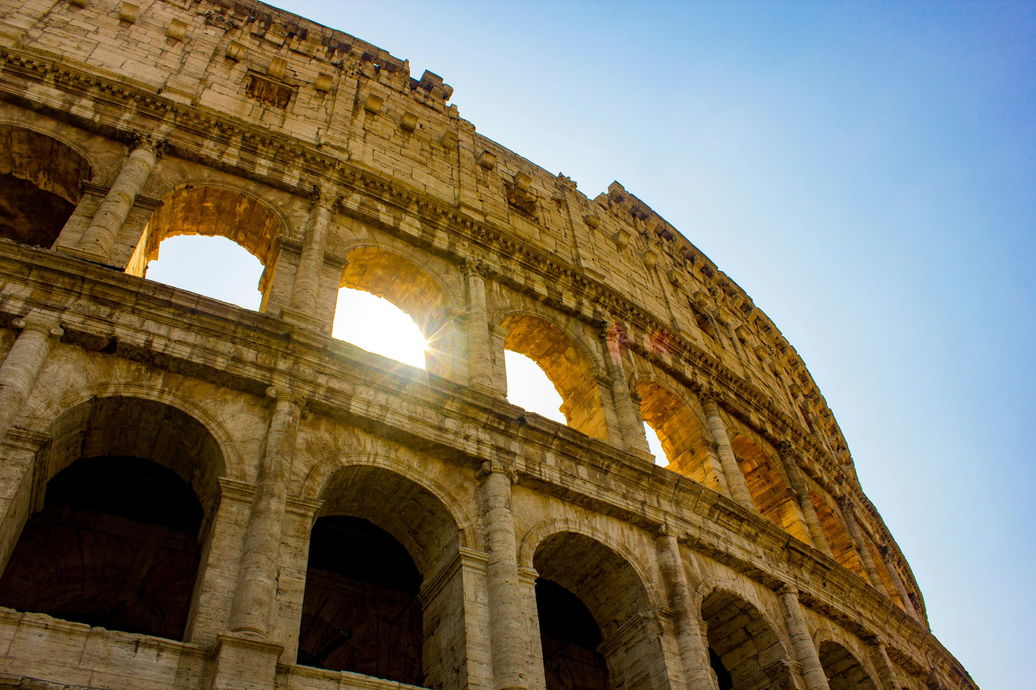
When you’re on a guided tour service, you don’t have to wait outside. Thanks for the skip-the-line entry. You can directly enter the Colosseum with your local expert guide without wasting time on the line.
The Colosseum tour is organized in different parts. Different tours give you different access. The low-budget tour option gets you to the Arena floor and the expensive one gives you access to the Underground and the top tier. Depending on your budget range choose the Colosseum tour for yourself. We suggest you take tickets that include all access. With that, you will get the true sense of the Colosseum from inside and out. Thus get a wholesome experience.
Here sharing some Skip-the-line Colosseum Tour options by Rome Tour Tickets
Skip-the-line Colosseum Arena Floor Visit
Walk in the footsteps of the gladiators when you enter the Colosseum which takes you directly to the Arena floor. Listen to the professional guide and relive the moments while standing in the exact same spot where once gladiators fought.
Highlights:
- Take the Gladiator entrance
- Fast track entry to Colosseum
- Amazing 360 views of the Colosseum from Palatine Hill.
Skip-the-line Colosseum Private Walking Tour
Take a private tour to the Colosseum with a dedicated tour guide. With an afternoon walking tour, you can experience this ancient place in its most authentic glory.
Highlights:
- Walkthrough the city with guide’s commentary
- Skip-the-line entrance
- Visit must-see sights with a small group
Ancient Colosseum Underground Tour with Gladiator’s Arena
You will get to visit this ancient landmark with the fullest access. That includes underground chambers, Gladiators entrance, and the Arena floor.
Highlights:
- Avoid lines and crowds
- Discover the 1st and 2nd tiers of Colosseum
- Get an amazing view from the Arena floor
Exclusive Allocated Entrance for Colosseum Underground Tour
With an exclusive Colosseum underground tour, you will experience this site like never before. will get VIP access to a place that is usually closed to the public.
You Highlights:
- No waiting line
- Acquainted with audio headset
- Can explore the outside archaeological area after the guided tour ends
Summary
The best way to do a Colosseum tour is by Rome tour tickets guided service. With the free entrance and guided service, you will get the best tour experience.
I hope you find this article about the Skip-the-line Colosseum underground tour helpful and it answers all your questions. Hope your next tour to Rome Colosseum will be a memorable one.

